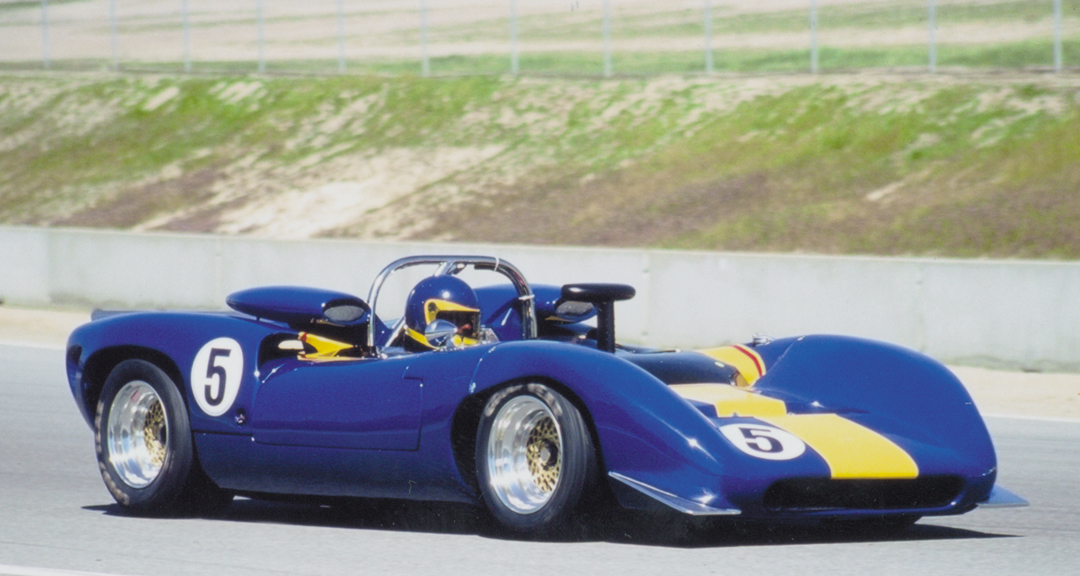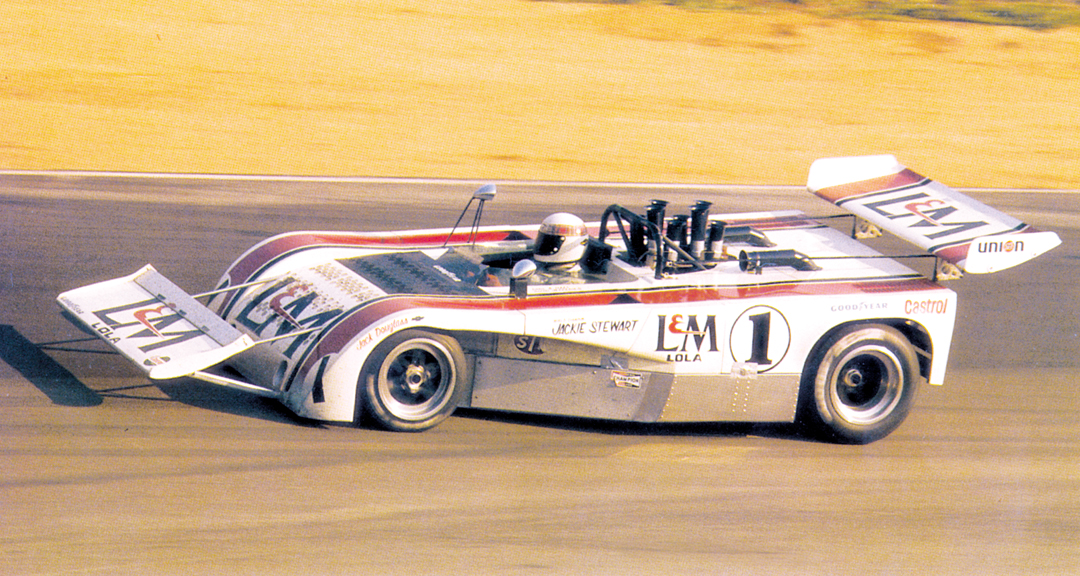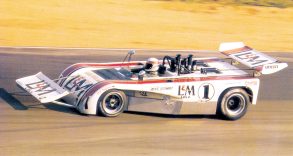The Canadian American Challenge Cup (Can-Am) was cosanctioned by the SCCA and CASC; it was a series nicknamed the “unlimited” series. Although there was a basic set of rules, the cars had to be two-seaters with bodywork covering the wheels, have doors, a windscreen and brake lights and meet various safety requirements.
There was no regulation on the cars’ dimensions, minimum weight, materials used or size of the tires. This was all open to the creativity of the designer.
The nickname “unlimited” came from the regulations allowing engines of unlimited displacement and number of cylinders (ie, horsepower). Essentially, this was the open sports racing car series and it became a hotbed of new technology and racing car design.
It took place from 1966 until 1974 with races in Canada and America. At its peak it was a 10-race series featuring cars from BRM, Chaparral, Ferrari, Lola, March, McLaren, Porsche and Shadow. Some of the famous drivers who took part in the Can-Am include Amon, Donohue, Follmer, Gurney, Hill, Hulme, McLaren, Oliver, Revson, Scheckter, Siffert, Stewart and Surtees.
It was partly known as the “Bruce and Denny Show” because of their five straight years of winning championships racing McLarens. It started with a Lola championship and ended with complete domination by Porsche with the 917/10 and 917/30.
Today there is a historic Can-Am group which organizes races across the country, including some very popular Can-Am reunion events.
The value of these cars today is determined largely by their provenance, whether a team car or a private car, the race history and the condition.
1965 Lola T70 Spyder

Eric Broadley’s Lola Cars Ltd. designed the T70 for the two-seater sports racing car category. Following the trend of using American V-8’s in light racing cars, the Mark I T70 was first introduced at the January 1965 London Motor Show. When the first Can-Am season started in 1966, the Mark II T70 was the perfect entry. It had a light but sturdy aluminum monocoque and a strong Hewland LG500 gearbox mated to a powerful small block Chevrolet V-8. The T70 was a beautiful car with open Spyder bodywork and handled quite well. It had considerable success racing in England, and in John Surtees’ capable hands, it won three times in the Can-Am and took the first title. The T70 Spyder was also made in Mark III form and driven by many greats such as Mark Donohue, Dan Gurney, Denny Hulme and Brian Redman.
1971 Lola T260

For the 1971 Can-Am season, Lola chief engineer Bob Marston, under the direction of Lola Co. founder Eric Broadley, created the rather unconventional looking but very quick T260. It was powered by a big Chevrolet V-8 producing over 700 bhp mated to a Hewland LG gearbox. Driven by Formula One world champion Jackie Stewart, the L and M–sponsored T260 was the only opposition to the might of the McLaren M8F’s of Hulme and Revson. Stewart had two pole positions, took two victories, and ended up 3rd in the championship. Had the team had better racing luck, less DNFs and better front-end grip, McLaren might have truly been challenged.
Criteria Used For Assessing Valuations for this Guide:
- Degree of Originality
- Overall Condition, Restoration
- Technology, Design, Coachbuilder
- Production Numbers/Rarity
- Competition History
- Ownership History, Documentation
- Modern Event Eligibility
Regional Variances
The prices stated in this guide are based on U.S. values. The values of historic racing cars can vary as much as 25%-35% in other countries, depending on local market appeal, currency rates, import duties, and VAT. Most of the time, we are able to document known sales or closed escrows, as they say in real estate. When this is not possible, a logical estimate of the car’s value is given, based on its sales history and relationship to cars of its type.
The prices stated in this guide are based on U.S. values. The values of historic racing cars can vary as much as 25%-35% in other countries, depending on local market appeal, currency rates, import duties, and VAT.
LEVEL |
VALUATION CATEGORIES |
|---|---|
I |
The best combination of all criteria. |
II |
Satisfies mid-range of criteria. |
III |
In need of restoration. Meets only a few points of criteria |




